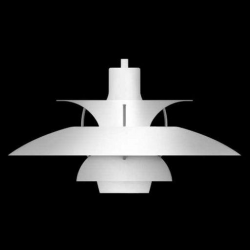December 24,2019
The Intellectual Property High Court Decision of November 26, 2019 (Case No. 2019 (Gyo-Ke) 10086 — Presiding Judge Otaka)
◆ Main text of the case
【Summary of the Judgment】
- The defendant’s Trademark for the three-dimensional shape of “lamp shade”, which is the designated goods of the Trademark, corresponds to a “trademark [that] consists solely of a mark indicating, in a common manner, in the case of goods, …shape” set forth in Article 3, Paragraph 1, Item 3 of the Trademark Act.
However, the three-dimensional shape of the defendant’s lamp shade (the “Lamp Shade”) had distinctive features at the time the defendant commenced the sale of it in Japan in 1976. Since 1976, the defendant has sold the Lamp Shade continuously and for a long period of time in Japan, and has carried out advertising activities continuously and repeatedly so as to give the impression to consumers and traders that the Lamp Shade is excellent in design and is manufactured and sold by the defendant. As a result thereof, by the filing date of an application for registration of the Trademark (December 13, 2013), the three-dimensional shape of the Lamp Shade was recognized to have distinctiveness among traders of lighting apparatuses and interior accessories and consumers who are interested in lighting apparatuses and interior accessories as a shape of lump shade manufactured and sold by the defendant, and the Trademark for the three-dimensional shape of it has come to fall under Article 3, Paragraph 2 of the Trademark Act; more specifically, the Trademark has come to be recognized as a “trademark…, as a result of the use of the trademark, consumers are able to recognize the goods…as those pertaining to a business of a particular person.”
(Figure cited from the page 19 of the judgement.)
- The three-dimensional shape of the Trademark is not indispensable to effectively express a function of the Lamp Shade that can “almost completely eliminate discomfort caused by glare from a light source while maintaining the brightness which allows a person to clearly recognize the faces of people around the person and illuminate around the hands of the person sufficiently” as argued by the plaintiff. Therefore, the Trademark is not considered as a “trademark [that] consists solely of features…that are naturally provided to goods” set forth in Article 4, Paragraph 1, Item 18 of the Trademark Act.
- Regarding the three-dimensional shape of the Lamp Shade, (i) even if a designer’s copyright to the three-dimensional shape of the Lamp Shade has arisen, the designer’s copyright does not prohibit a third party from filing an application for registration of a trademark, (ii) even if a trademark for the three-dimensional shape of the Lamp Shade is not registered in any foreign country, an act of obtaining registration for such a trademark in Japan is not immediately considered contrary to the international faith, and (iii) even when the background to an amendment of the designated goods of “lamp shade” made by the defendant is taken into consideration, the defendant’s act of filing an application for trademark registration for the purpose of import suspension of the plaintiff’s “lighting apparatus” is not considered to lack social reasonableness. Therefore, the Trademark does not correspond to a “trademark [that] is likely to negatively affect public policy” set forth in Article 4, Paragraph 1, Item 7 of the Trademark Act.
【Comments】
- Regarding the summary of Judgment 1, the court denied the inherent distinctiveness of the three-dimensional shape of the Lamp Shade, but on the other hand, the court acknowledged that said three-dimensional shape has acquired distinctiveness through use, more specifically, as a result of (i) its unique characteristics, and (ii) long-term continuous use, and among others, advertising activities carried out by placing an emphasis on the design and manufacturer and seller of the Lamp Shade. In recent years, the foregoing approach has been taken frequently in court cases (the Intellectual Property High Court decision of June 29, 2011, Hanreijiho No. 2122, p.33 [Y Chair case] etc.) and trademark registration practices, and is becoming established.
- Regarding the summary of Judgment 2, the court found to the effect that even if a shape that is not evaluated as indispensable for goods to properly function is a shape that is selected for the purpose of effectively expressing the function of goods, it is not considered as unregistrable as a three-dimensional trademark without exception. The foregoing is generally accepted in court cases (the Intellectual Property High Court decision of June 27, 2007, Hanreijiho No. 1984, p.3 [“Maglights” Flashlights case] etc.) and trademark registration practices (Part III, Chapter 16 of Examination Guidelines for Trademarks [14th revision]).
- Regarding the summary of Judgment 3, the court’s judgment is considered reasonable in light of several types of trademarks or example cases which are found to be contrary to public order or morality as shown in the Examination Guidelines for Trademarks (Part III, Chapter 6 [14th revision]), and the handling of several types of trademarks etc. which are explained in detail in the Trademark Examination Manual (42.107 disclosed on the JPO Website), and recent court cases which tend to deny to find a filing of a trademark registration for the purpose of plagiarism to be contrary to public order or morality (the Intellectual Property High Court decision of June 26, 2008, Hanreijiho No. 2018, p.97 [CONMAR case] etc.).
【Keywords】Lamp Shade, three-dimensional shape, Article 3, Paragraph 1, Item 3 of the Trademark Act, inherent distinctiveness, Article 3, Paragraph 2 of the Trademark Act, distinctiveness through use, Article 4, Paragraph 1, Item 8 of the Trademark Act, a shape that is indispensable to effectively express a function, Article 4, Paragraph 1, Item 7 of the Trademark Act, likely to cause damage to public order or morality, Poul Henningsen, PH5
※ The contents of this article are intended to convey general information only and not to provide any legal advice.
Kei IIDA (Writer)
Attorney at Law & Patent Attorney (Daini Tokyo Bar Association)
Contact information for inquiries: k_iida@nakapat.gr.jp
